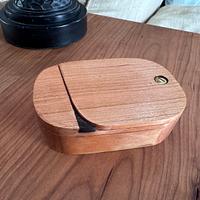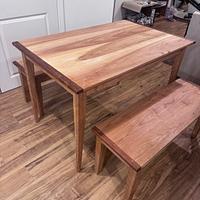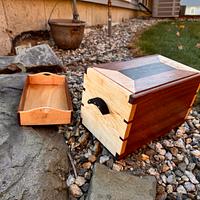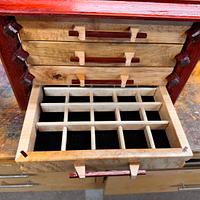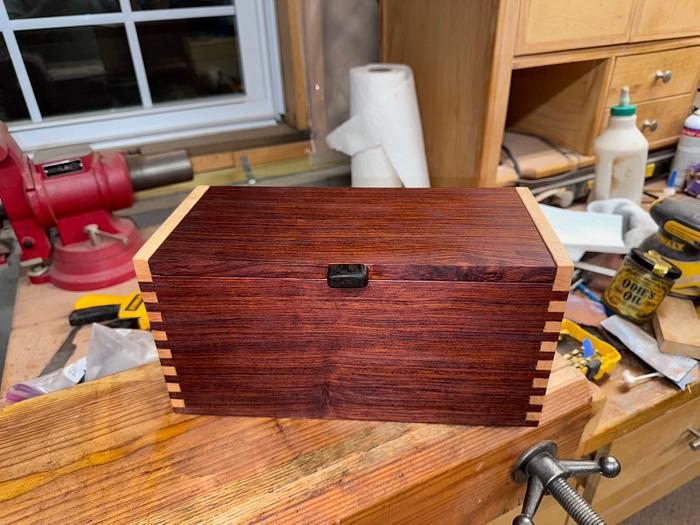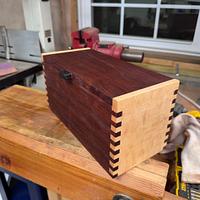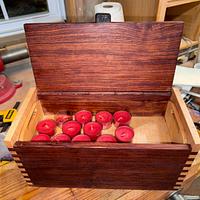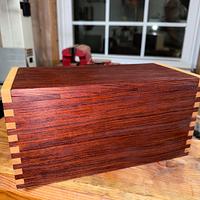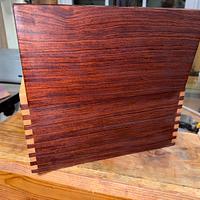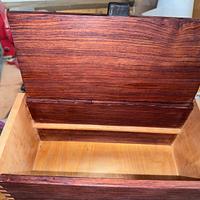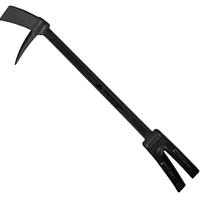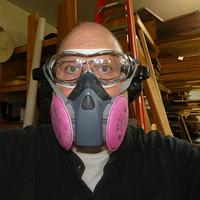Share your craft projects
Make new craft buddies
Ask craft questions
Blog your craft journey

Alan Sateriale
108 posts
and
7 followers
in almost 2 years
in almost 2 years
More from Alan Sateriale
Hidden Hinge Candle Box
This box is made from Bubinga and Curly Maple for the box and tray carcasses, Wenge for the lid tab, and Birch Plywood for the bottoms. I used a box joint to assemble the carcass for no particular reason. The interesting thing about this box is the hidden hinge feature using a wooden dowel. The dowel (3/8" diameter, here) is made of the same species of wood used on the carcass and lid (Bubinga, here). The dowel is cut into sections, which are connected to each other by short lengths of 1/16" brass rod embedded into the centers of the dowel sections. This assembly allows each dowel section to rotate independently of each other. The dowel assembly is sandwiched between the lid and carcass, resting in a groove routed by a core box bit (you guessed it, 3/8" diameter). Using a router table with this bit, the trick is to precisely align the fence and router depth to cut grooves along the edges of both the back face of the box carcass and the rear underside of the lid. When done correctly, the dowel assembly sits in between these two grooves with part of the assembly extending beyond the rear of the box-lid. The dowel sections are then carefully glued alternatively to the box carcass and lid. When dry, the extended dowel end is planed smooth to the box carcass-lid. If it's done well, you won't be able to see the dowel sections from the outside of the box til the lid opens. This approach has been popularized by the professional woodworker, Rob Cosman.
?
11 Comments
Nice "wow" factor with that wood choice Alan.👍
The hinge is a great idea!
The hinge is a great idea!
Very nice Alan! Good work. I love the flush hidden hinge feature and have used it many times in my boxes. It's quite labor intensive but worth it.
beautiful box, and that hinge is a great way to make a clean look.
working with my hands is a joy,it gives me a sense of fulfillment,somthing so many seek and so few find.-SAM MALOOF.
Excellent looking box. Choice of woods wss great!
Ron
Beautiful! Nice job on the hinge.
Beautiful wood. I really enjoy that hinge design too…I made a jig to help when I make them…otherwise they are a real pain. Nicely done.
Ryan/// ~sigh~ I blew up another bowl. Moke told me "I made the inside bigger than the outside".
Nice box Alan. The finger joints draw your eye just like a DT, and I agree the wood choices, and their respective contrast make it a bling box. Nice job, and the hinge is different, and looks great.
So nicely done! The hinge is very interesting and I need to add this to my growing list of new techniques I want to try! Thanks for sharing the project.
Thanks, guys!
?
All good! Interesting hinge and contrasting timbers.
That's really cool! Well done!
The Other Steven









